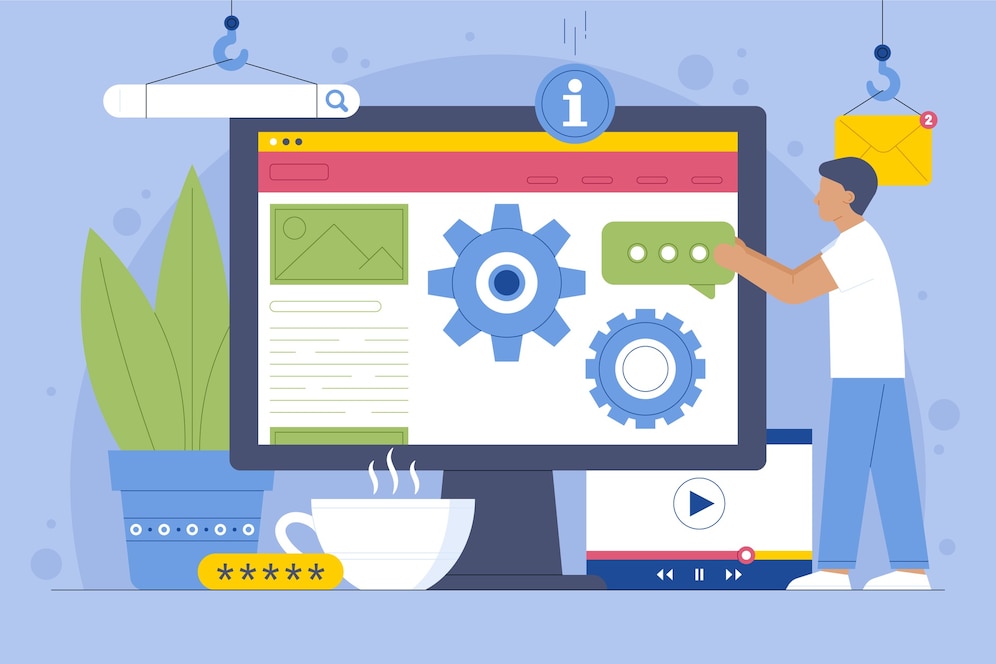In today’s fast-paced advanced world, website performance plays a vital part in capturing and holding client consideration. As online customers ended up progressively observing, the requirement for seamless and fast-loading web pages has never been more basic. Usually where Core Web Vitals come into play. Core Web Vitals is a set of user-centric measurements presented by Google to degree and assess website performance based on genuine client encounters. Among these measurements, “Interaction to Next Paint” stands out as a key figure in deciding client involvement. In this web blog, we are going dive into understanding Interaction to following aint and investigate ways to progress Core Web Vitals for search engine optimization and better website performance.
What is Interaction to Next Paint?
Interaction To Next Paint, too known as Time to Intelligently (TTI), may be a Center Web Crucial metric that gauges the responsiveness of a web page. TTI measures the time it takes for a page to gotten to be completely intelligently after the client begins with an interatomic with it, such as clicking a link or pressing a button. It is significant to client involvement, as a moderate TTI can lead to disappointment and deserting, coming about a negative effect on your website’s bounce rate and transformations.
Improving Core Web Vitals for a Better User Experience
Optimize Server Reaction Time: One of the essential components influencing TTI is the server reaction time. A moderate server reaction can delay the page’s interactivity. Utilize strategies like utilizing substance conveyance systems (CDNs), caching, and diminishing server-side handling to optimize the server response time and make strides in TTI.
Minimize JavaScript Execution: JavaScript has a capable dialect utilized broadly in modern web improvement. In any case, it can moreover be an execution bottleneck. To make strides TTI, consider diminishing the sum of JavaScript code or conceding its execution until after the starting page stack. This could be accomplished through code part, sluggish stacking, and nonconcurrent stacking.
Optimize CSS Conveyance: Cascading Fashion Sheets (CSS) play an imperative part in the visual introduction of a webpage. Expansive CSS records or wasteful conveyance can moderate TTI. Minimize CSS record measure, use browser caching, and utilize media inquiries to stack as it were vital styles for particular gadgets, hence progressing TTI.
Sluggish Stack Pictures and Media: Stacking high-resolution pictures and media records forthrightly can significantly increase page stack time and delay TTI. Execute apathetic stacking procedures to stack pictures and media components as they were when they come into the user’s viewport, lessening starting page stack time and moving forward generally TTI.
Utilize Effective Third-Party Scripts: Third-party scripts can include profitable usefulness to your site but can too present execution issues in case not optimized. Evaluate the need for each third-party script and select offbeat stacking to avoid them from blocking the page’s rendering handle and influencing TTI.
PrioritizeAbove-the-Fold Substance: Clients tend to associate with the obvious substance, to begin with. Prioritize loading above-the-fold content to create the page show up responsive and intuitively rapidly. Offbeat stacking and code part can offer assistance accomplish this objective.
Frequently Screen and Test: Web execution is a continuous preparation. Frequently screen your website’s Core Web Vitals utilizing devices like Google’s PageSpeed Bits of Knowledge or Beacon. Ceaselessly test and optimize diverse viewpoints of your location to guarantee steady changes in TTI and other Core Web Vitals.
Conclusion:
Interaction To Next Paint, or Time to Intelligently, may be a crucial Core Web Vitals metric that specifically impacts the client involvement on your site. By centering on optimization techniques. like progressing server response time, minimizing JavaScript execution, optimizing CSS conveyance, and sluggish stacking substance, you’ll altogether improve your website’s TTI and by and large execution. Routinely observing and testing your site’s Core Web Vitals












